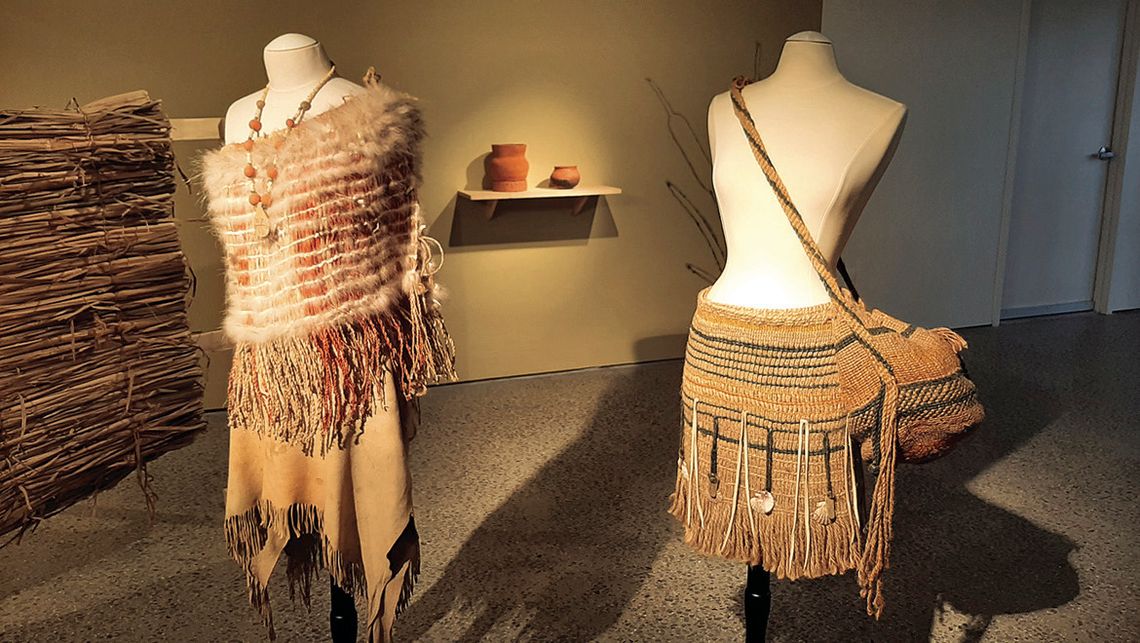‘Indigenous Dress And Culture’ Exhibit Opening At Lenfest
The Lenfest Center will feature its first pop-up Kamen Gallery exhibition, “Indigenous Dress and Culture,” a segment of Lenfest Center’s Outreach & Engagement Series, opening Sept. 1 and running through Dec. 23.
The exhibit is open to the public Monday through Friday from 9 a.m. to 4 p.m. and during Lenfest performances. The exhibit is closed during university holidays.
The Lenfest Center’s University Outreach & Engagement Series is focused on connecting university knowledge and art experiences on the W&L campus and beyond to the community in a mutually beneficial partnership.
The pop-up exhibition pays honor to the Lenfest Center’s first ever Indigenous-centered and Indigenous-led event Oct. 8 with Red Sky Performance, a leading company of contemporary Indigenous performance (dance, theater, music and media) in Canada and worldwide.
These interdisciplinary offerings usher in new ways for W&L’s campus to celebrate Native American histories and cultures leading up to Indigenous Peoples’ Day on Oct. 14, Native American heritage month in November and beyond.
The “Indigenous Dress and Culture” pop-up exhibit and artistry was crafted, collected and shared by Victoria Last Walker Ferguson, a citizen of the Monacan Indian Nation; Elizabeth Wislar, a citizen of the Northern Cherokee Nation; and Harvey Markowitz, professor emeritus of anthropology, adding to the exhibit from a part of his collection of modern reservation art.
Ferguson is sharing generations of historical and cultural knowledge passed down from her ancestors, the first peoples of the mid-Atlantic region. Each piece was created by Ferguson and is displayed to acknowledge and honor the past, present and future contributions to this area by the Eastern Siouan and Tutelo speaking peoples, among them the Monacan.
Clothing options for the Indigenous people of Virginia’s interior evolved over the centuries of European occupation and colonization. In the prehistory period, Indigenous people used the natural resources available to construct their clothes. This exhibit includes some examples of the early clothing options made from the inner bark of basswood trees, hemp fibers dyed with natural colors and brain tanned deer hides.
With the arrival of the Europeans and their trade goods, Indigenous clothing began a process of evolution. Glass beads and metal items such as hawk bells and trade silver were early additions to garments. The clothing options evolved to include wool, ribbons, deer hides and kilos of glass beads. The beadwork is filled with images with specific meanings.
Also included in the exhibit is a large-scale textile sculpture created by students in the Theater, Dance, and Film Studies Department costume shop, under the mentorship of resident costume designer and local artist, Elizabeth Wislar. The dress measures 12 feet tall by 4 feet wide, and consists of 365 handmade silent metal cones, fabric, metal, wood, buttons and beads. The dress is modeled after a traditional Native American jingle dress honoring and bringing attention to Missing and Murdered Indigenous Women and Relatives (MMIW).
Markowitz’s collection includes beadwork from the Rosebud and Pine Ridge reservations, modern paintings by Navajo painter Leland Holiday and traditional baskets created by citizens of the Tohono O’odham Nation. All these works draw on the millennia-values and connections between the cultures and environments shared by Indigenous peoples of North America. During the past couple of decades, Markowitz and professor Joseph Guse of the Economics department have sponsored a W&L spring term course traveling to both the Oglala Pine Ridge and the Tohono O’odham Reservation.
The exhibit is sponsored in part by Class of ’64 Performing Arts Fund; Native American Indigenous Cohort; Diversity, Inclusion and Student Engagement; Art and Art History; and Latin American/Caribbean Studies; Leyburn Scholars in Anthropology; Office of Community-Based Learning; Museums at W&L; Office of Sustainability; and University Library.
.jpg)



